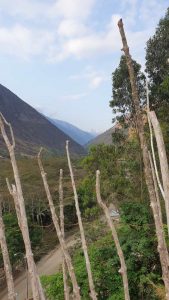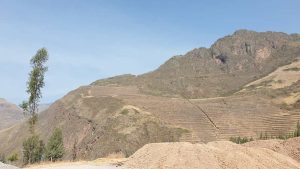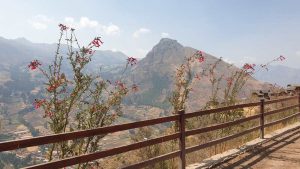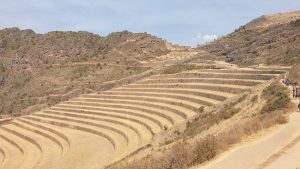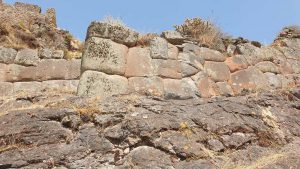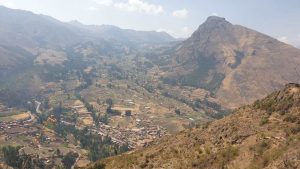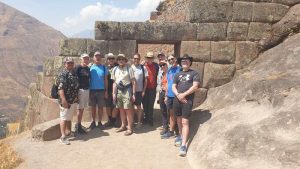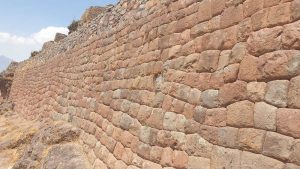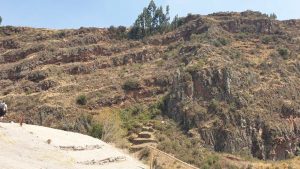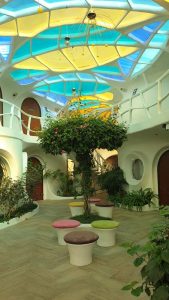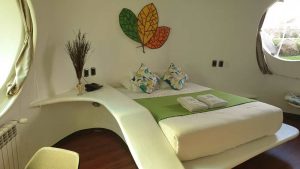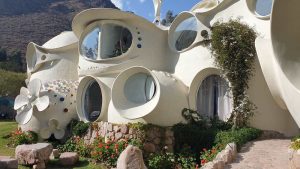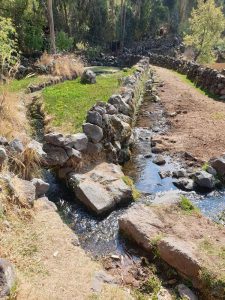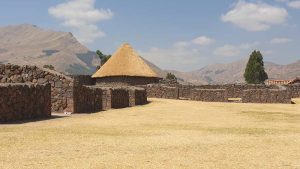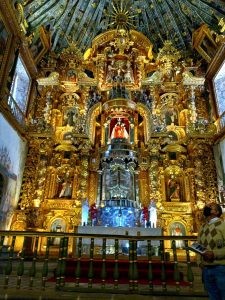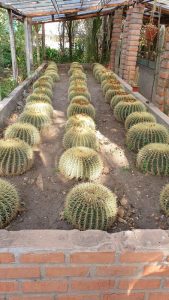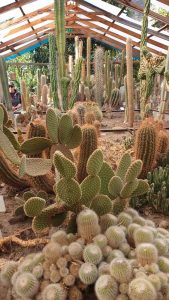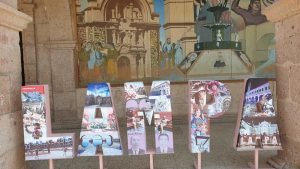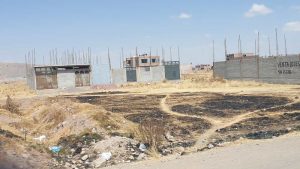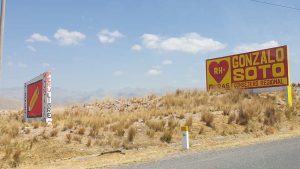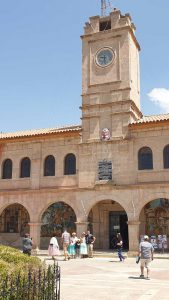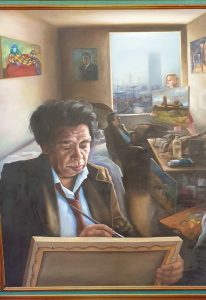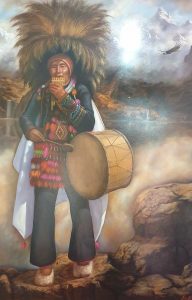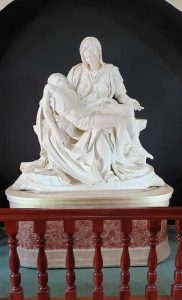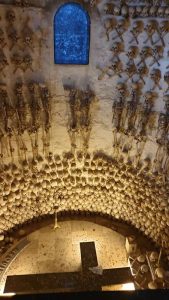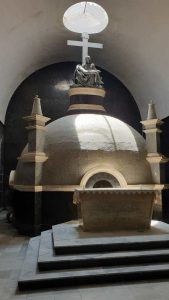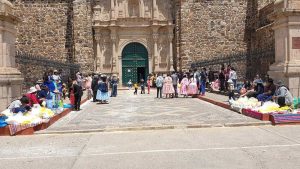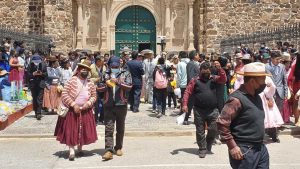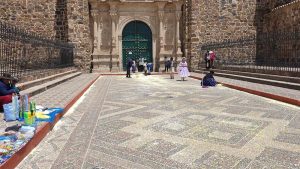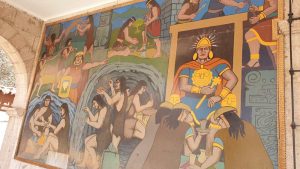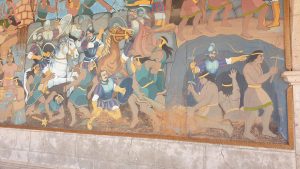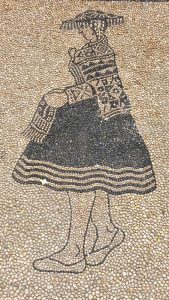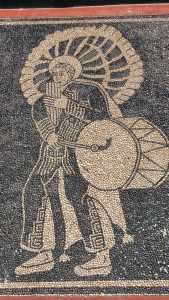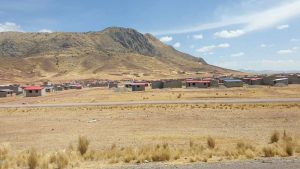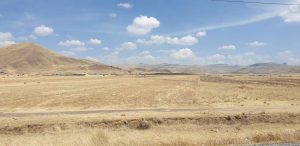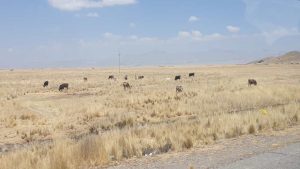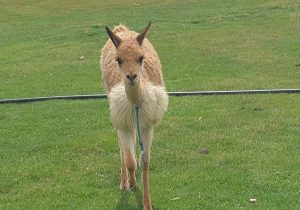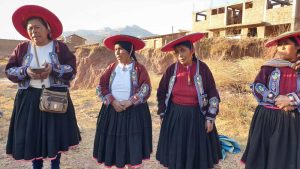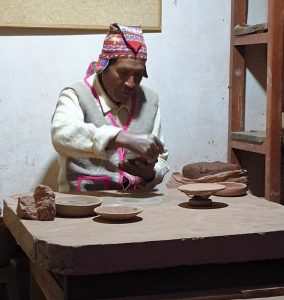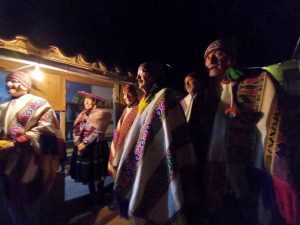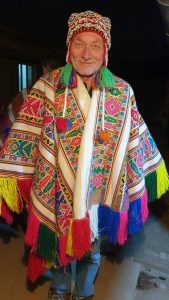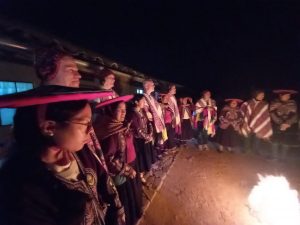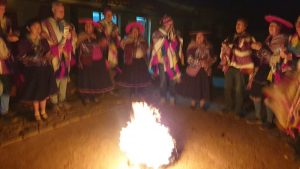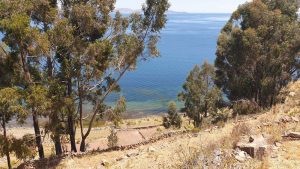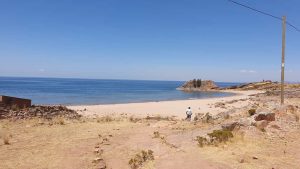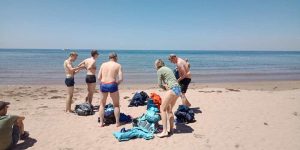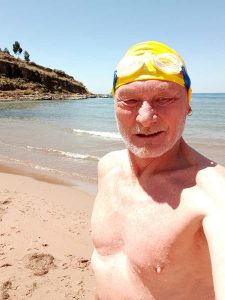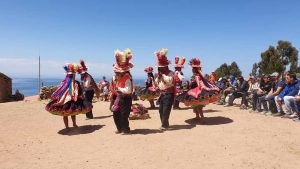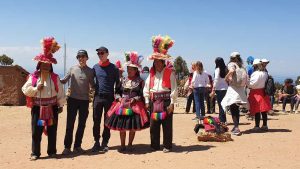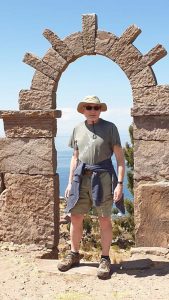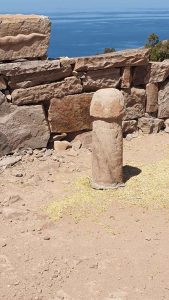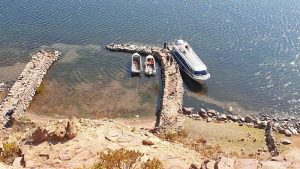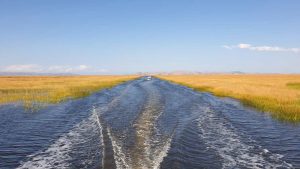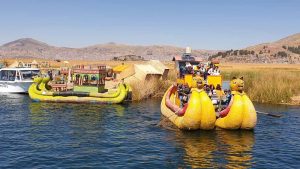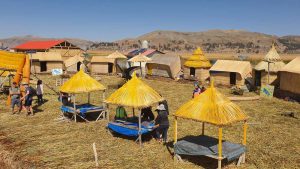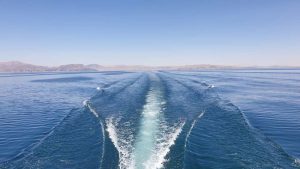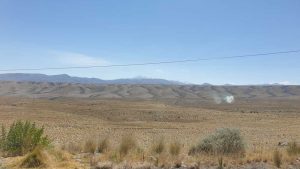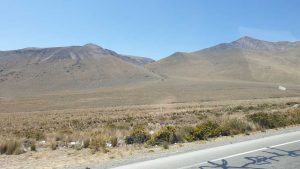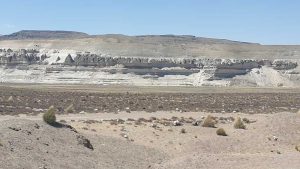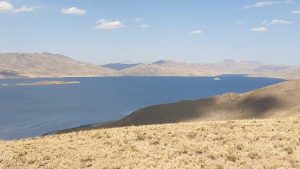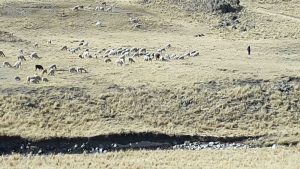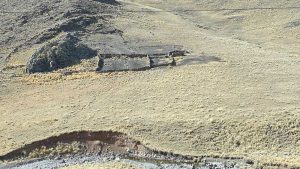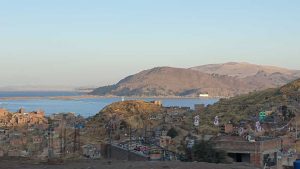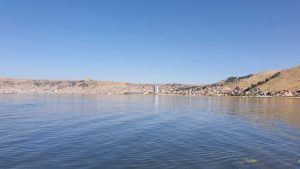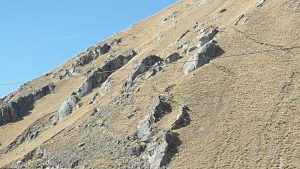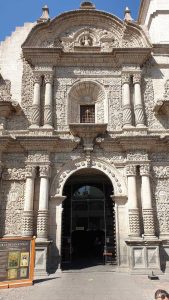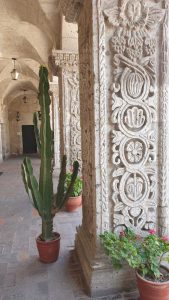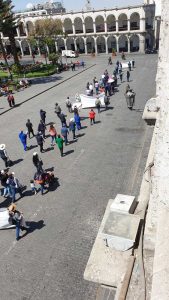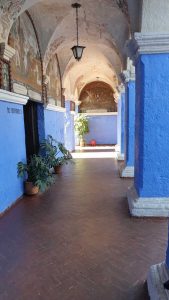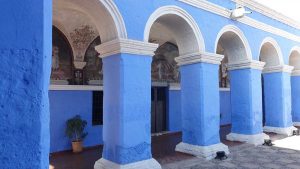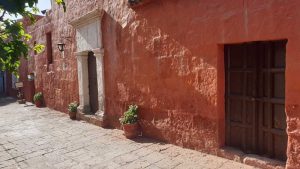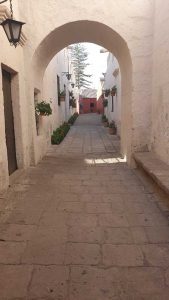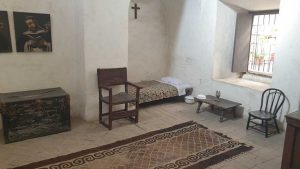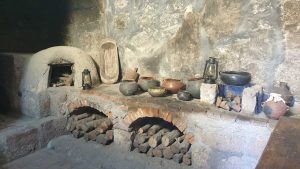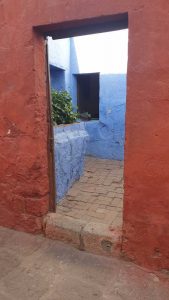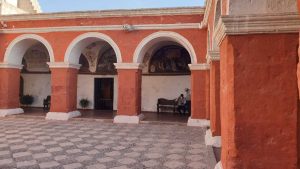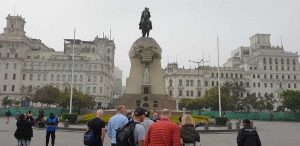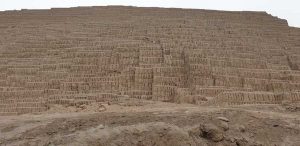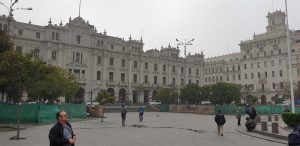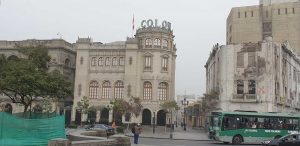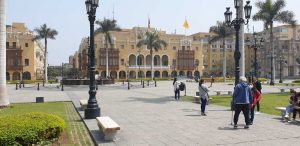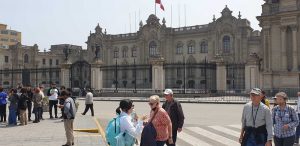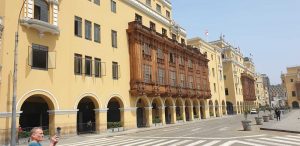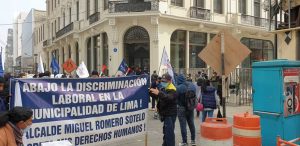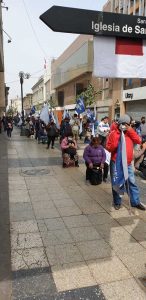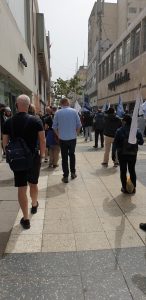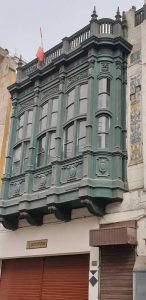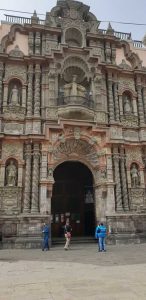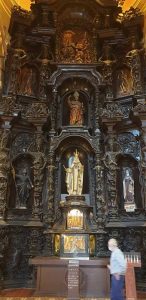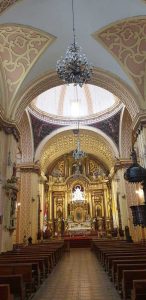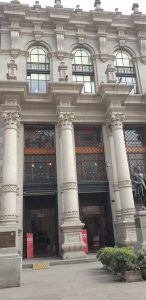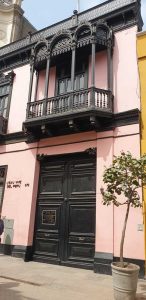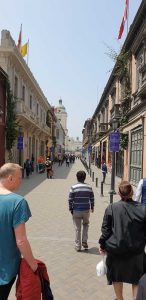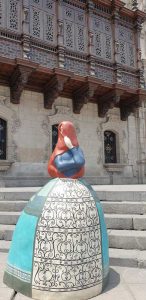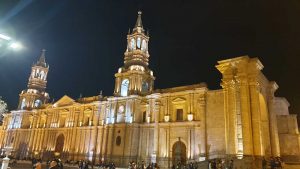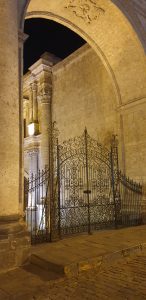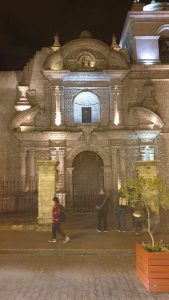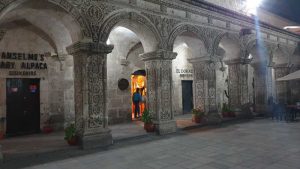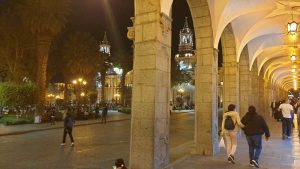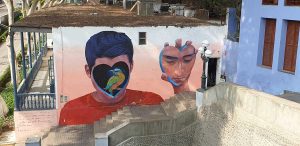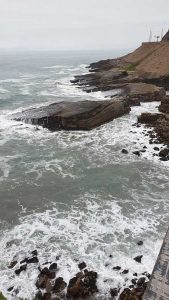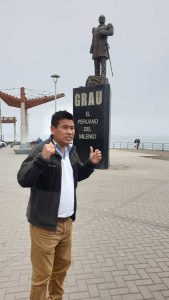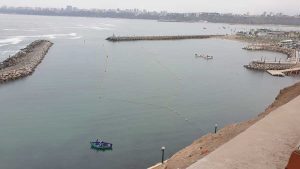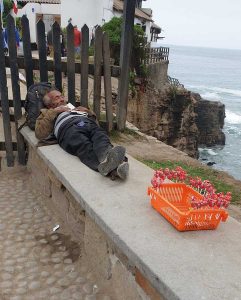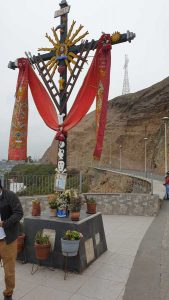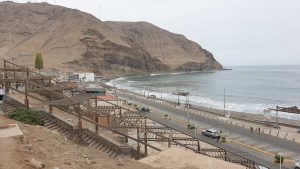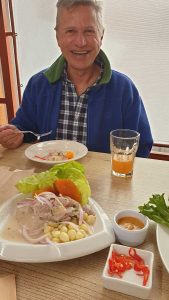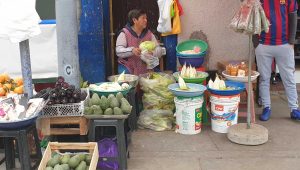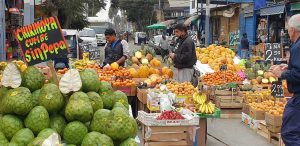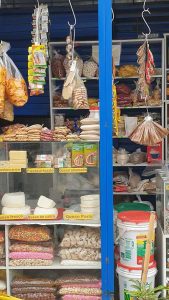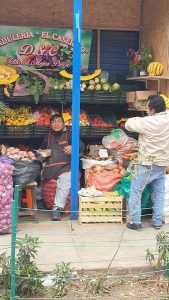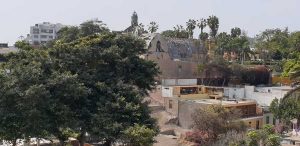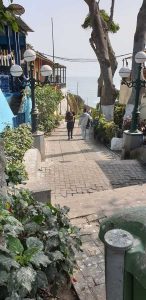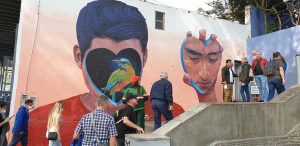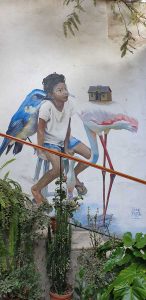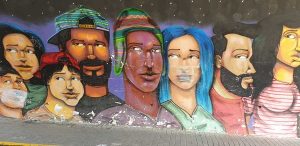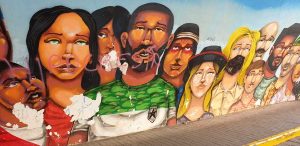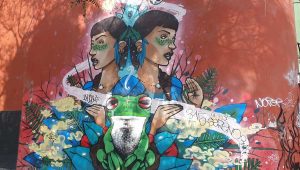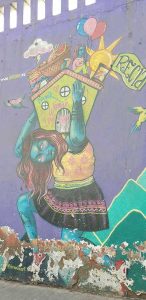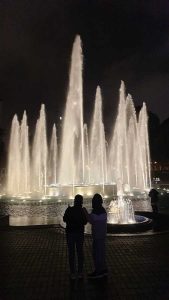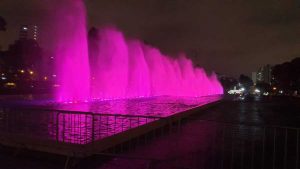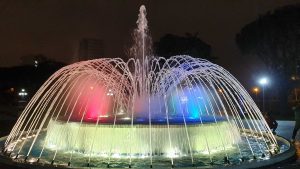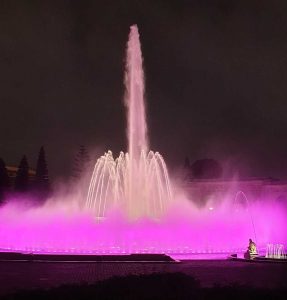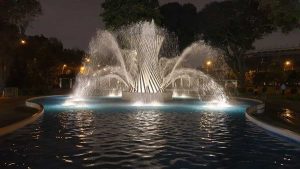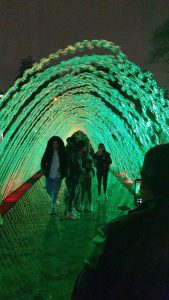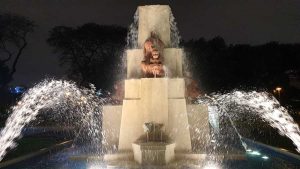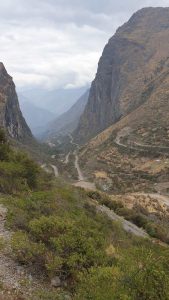
We are collected by a different mini-bus which then has made it’s way down the narrow dirt road to the Wifala Hotel. Once on a main road, we stop to connect to the trailer carrying our mountain bikes and continue to climb up to the divide over which all the rivers flow into the Amazon. The weather is grey with rain threatening. Apparently, it can be quite mystical cycling out of the mist into the sunshine. We are briefed to wear layers and that we will complete the journey in shorts and tee shirts.
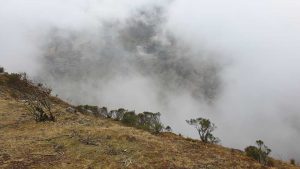
A short distance over the divide at over 4,000 metres, we come across ‘The Airport’. It is a large paved area between the road and a sheer cliff below which fluffy clouds swirl obscuring an almost certainly vertiginous view. The large H in the middle of this space is a clue that this so-called Airport is in fact a helicopter pad. There is no sign of rain and we proceed to get acquainted with our bikes as they are unloaded by the team supplying the bus, trailer and bikes.
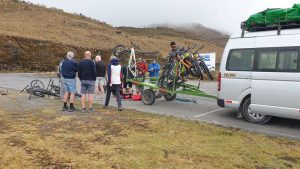
The bikes seem huge with very wide handlebars and very fierce disc brakes. It’s cold up here and I’ve got my down jacket on plus the first outing for my waterproof Mac, bright blue for visibility. There is a selection of helmets and find myself choosing between a bright yellow one and a blue helmet to match my Mac. It looks smart and has a visor at the front.
Our briefing is: No overtaking and to ride in single file, keeping a good distance between riders and definitely no overtaking our leader. We set off with patches of mist on both sides and I’m grateful for that as looking down brings on the vertigo and It’s clear that I have to concentrate on the road.
It just happens that I am first out behind our leader Roco – but he speeds on ahead – obviously used to leading a much younger party. I take it slowly to get used to the bike and the conditions.
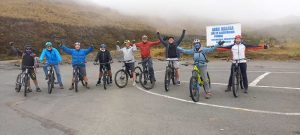
The Hairpin bends are a huge challenge and about five minutes into the ride there is a shout to stop just around one of these bends and I see that Ann has fallen off and everyone except Rico, who is already around the next bend, has stopped. Anne has been caught by the gravel on the side of the road and is shocked and in pain. As she is a Doctor, she knows that she has broken something in her wrist and suspects multiple breaks in writs and hand. Eventually our support vehicle arrives, having taken a while to get the un-used bikes loaded up onto the trailer. We all help to carry Ann to the bus on a stretcher where she joins the four of our party who have declined to cycle. The plan is to take her and partner Ingo to the nearest town where they can get a taxi to Cusco and a hospital.
Somewhat shaken, we set out again with Richard (our tour guide) as the back and Charlie leading. Angela (our local guide for the Inca section) has gone ahead with the minibus to arrange for Ann to be transported to hospital.
We now descend into thick fog which turns to cold rain. The road is wet and quite scary and I can’t see more than fifteen to twenty metres ahead. We are overtaken by a car – a woman in the back has wound down her window and shouts ‘Where are your lights?’ She has a point and I’m quite glad to have my bright blue rain jacket – most of the other cyclists have no high viz gear at all. The hairpin bends are treacherous and Charlie loses control and looks ready to fall into the V-shaped ditch on the inside of the road. He manages to stay out of the ditch, but falls in the process. As I catch up, I break too hard and also fall off. No harm is done and we wait for the others to catch up. After a few minutes it is clear that Rico is not coming back, so we re-mount and continue cautiously and find him waiting several hairpin bends away. We ask him to slow down.
It gradually gets warmer and there are now numerous fords over the road where small rivers flow, wetting our shoes as we ride through them. A car overtakes me on one such ford – they are always on a hairpin bend – forcing me off the road into another minor fall.
Slowly the fog and rain disperses and we all begin to enjoy the ride. We pass banana trees (not indigenous to the Americas) indicating that we are now in a tropical climate. Until now we have been free-wheeling down the Andes with the breaks on all the time and both hands on the wide handlebars. The strain on shoulders and neck is considerable. Now that there is some peddling to do, the unaccustomed exercise is welcome. Suddenly we see the rest of our party and the minibus waiting for us. I do a small wave and immediately apply the brakes, only to flip head over heels. The visor on my helmet breaks as I hit the ground and I feel it graze my forehead, plough into the bridge of my nose and continue downwards to graze the end of my nose and chin. I end up with one leg tangled in the bike. Nigel, who is a nurse rushes to the rescue with tissues to mop up the blood and someone else picks up the offending visor. I don’t think I’ve broken anything and the helmet has saved any contact with the ground. I’m able to stand and walk, but Angela is convinced that I will need a stich on my nose and after applying a pad of gauze with tape tells me there is a clinic at a nearby town. Richard is convinced I will need ice as he expects to see my eyes puff up and sets of – I have to shout after him not to bother. Ice will only delay the healing and I’m not convinced that my eyes will puff up anyway. Angela has Iodine which she liberally dabs on my superficial wounds. It reminds me of my childhood, when Iodine was the go-to antiseptic. I think that my knees will also need looking at – they have both been grazed through my jeans. They both get the Iodine treatment. We wait for the bikes to be loaded up onto the trailer on what seems to be more Inca constructions. This is a resting post for the runners who carried vital information to the Inca.
There is no queue at the clinic emergency room. Two nurses clean me up and plaster antiseptic cream on everything. It’s the equivalent of Savlon, which I have never liked. The three of us have a laugh as they try to find out if my nose is broken or if I am in pain – neither is the case. They do agree with Angela that I need stitches but they don’t have any fine enough thread for this job and we have to do to a larger hospital at the regional City forty minutes away. It is decided to try it but we have a tight window of opportunity to get to Santa Theresa. There are major roadworks and we’ve already missed the 3 – 4 pm slot and now have to make the 6 -7pm to get to our hotel for the night.
Angela and I arrive at the Emergency department, which seems very quiet, and are directed to Triage. Poking our heads though the open doorway we can see a man on a bed with cathodes on his chest. It looks like he’s had a heart attack and two men, possible relatives, are running in and out looking very anxious. After ten minutes we can go in, but first the paper-work has to be completed and my height, weight and blood pressure measured. Predictably the latter is on the high side.
There is no bustle – everything is calm and seems slow. It’s my turn on the bed and the middle aged, kindly nurse, who has done the paper work examines and cleans my wounds. She cuts a diagonal out of a green cloth and places over my face, then patiently delivers a local anaesthetic. We wait. The cock ticks. Will we make to portal between 6 and 7? Finally, the stiches come and I still don’t know how many. More than one – maybe three or four.
‘Muchas gracious Señora,’ I say as she finishes. I’m handed anti-inflammatory and paracetamol tablets with instructions. Angela has gone ahead with 100 Soules from me, to pay but she also has to get the prescription for antibacterial cream form the pharmacy. There is change from the S100 for the whole procedure (£22) so no point even sending in an insurance claim. We now rush out to find our minibus. Our companions have been relaxing, having coffee which they allege is the best so far found in Peru.
Walter (our driver) drives heroically, getting to our portal by ten past six and we will make it to our hotel. The major roadworks are creating a highway to Santa Theresa and it’s pretty hard going over rocky dirt roads with traffic going in both directions, sheer drops and single file sections. It’s dark by the time we get to the Eco Lodge, having missed the turnoff. There is a steep climb up crazy paved steps carrying our luggage. We have just made it in time to eat a meal before the staff leave at Eight-thirty. I treat myself to a beer.

